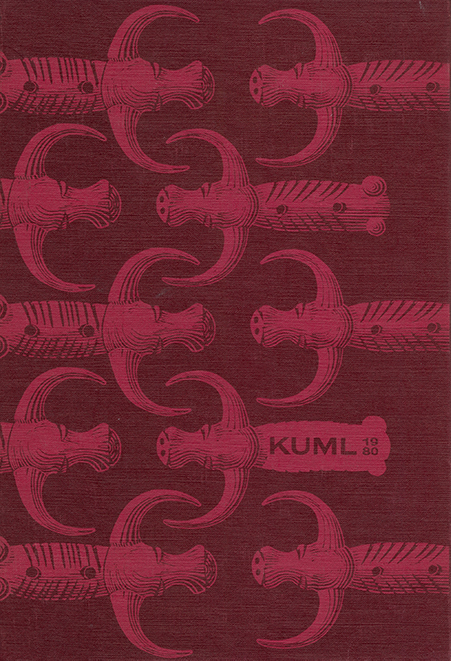Appendix. Revised dating of layers 3 and 4 from the Norslund settlement
DOI:
https://doi.org/10.7146/kuml.v29i29.107187Keywords:
Norslund, settlement, ertebølleAbstract
APPENDIX
A Revised Dating of Layers 3 and 4 from the Norslund Settlement
In Kuml 1965 there was a presentation of the Norslund settlement (1). This included the publication of two C-14 dates of layer 3, which gave an average dating to 3755 ± 120 BC in C-14 years (K-990 and K-991). This article also discussed the great similarity in the archaeological material between layer 3 and the layer below it, layer 4, which was C-14 dated to 4470 ± 130 BC in C-14 years (K-993). In 1965, however, the latter dating was called into question due to the fact that the dated material might have consisted of redeposited older material.
Since 1965 new excavations of the Ertebølle sites on Jutland and Funen and typological studies of the artefact content of C-14 dated cultural layers such as Brovst (2), Haldrup Strand, Ø. Jølby Kær, Skellerup Vig, Meilgård, and Tybrind Vig (3) have all shown the published C-14 datings of layer 3 to be incorrect.
In contrast, the dating of Norslund layer 4 does correspond well with later results. The C-14 tests from Norslund did not derive from the cultural layers in the main area of the excavation but from a marine layer series in an isolated trial trench below the settlement (4). With the aid of small profiles, an attempt was made to connect profile D of the main area with profile H of the trial trench, although direct contact between the profiles was not achieved. The lower part of layer 4, however, has definitely been found in the profiles and the layer is identical with profile H, layer 2, from which the dating K-993 K-993 + 4470 ± 130 BC derives.
In 1965, Norslund layer 3 was identified with profile H layer 6, which was dated by means of two tests of charcoal (hazel) to 3780 ± 120 and 3730 ± 120 BC (K-990 and K-991). However, layer 6 was only seen in profile H, and the layer completely tapered out in the northern end of the profile toward the main area. Thus there cannot have been any direct contact with layer 3, and consequently there is no indisputable evidence that the two layers are contemporary.
In 1965, layer 3 was presumed to be a synchronous deposit even though at various places there was a division of layers to a limited extent. The stratigraphical position of the layers does not exclude the possibility that the depositing took a certain length of time. In most of the excavation, the layer rests directly on the subsoil and can theoretically have been formed before or at the same time as the depositing of layer 4. In the south part of the main area, however, layer 3 is younger, as here it is deposited above layer 4. Layers 3 and 4, however, must as a whole have been formed relatively quickly, as the archaeological material shows such a high degree of similarity and as there are no signs of alder or later intrusions.
The conclusion of the above is that the C-14 datings of layer 3 must be rejected. A dating of the layer must therefore be based upon the archaeological find material which, as already shown in 1965, is very closely related to the find material from layer 4. A dating of the layer to the period around 4400 BC (in C-14 years) is therefore logical.
Søren H. Andersen and Claus Malmros
Downloads
Published
How to Cite
Issue
Section
License
Fra og med årgang 2022 er artikler udgivet i Kuml med en licens fra Creative Commons (CC BY-NC-SA 4.0).
Alle tidligere årgange af tidsskriftet er ikke udgivet med en licens fra Creative Commons.


